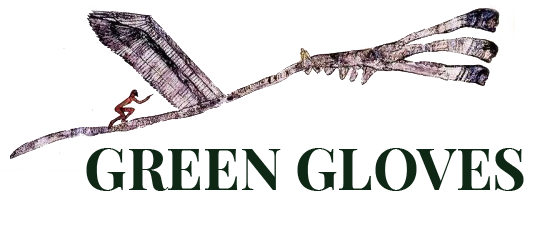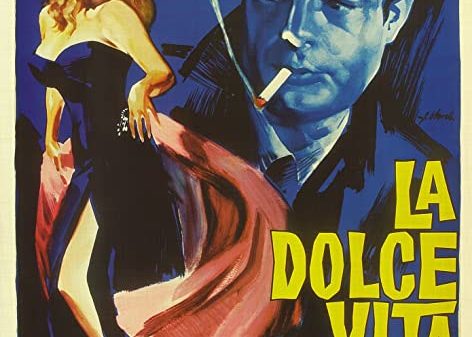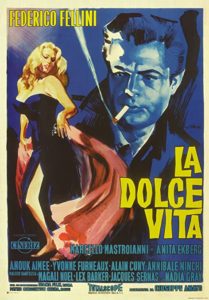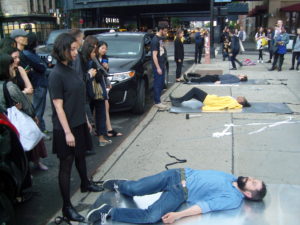There are music albums which take space in our lives because related to a specific moment or because they match perfectly our tastes in dancing or our thinking. Our time, our sense of time, is shaped by meetings and experiences and often music is part of them: events great (political or social) and small (things that happen in the everyday that unexpectedly change our path) can have even dramatic effects (as in this hard pandemic) but what remains beyond the moment, beyond these days, are the things that come to shape, uninvited, the frame of our thoughts and the way in which we perceive the world.
“Boxer” has this quality for me, and even more, it’s capable of shaping my mood, of bringing me to a place that I know, or knew, but which has each time changed, changed of course because I am not the same, but I was there once. It’s as though, it has the strength to cross time and experiences, between life that was then and my life now, in a sort of slow motion, like a movie when the film running through the camera speeds faster and time appears to slow, an elasticity that discovers another logic within experience.
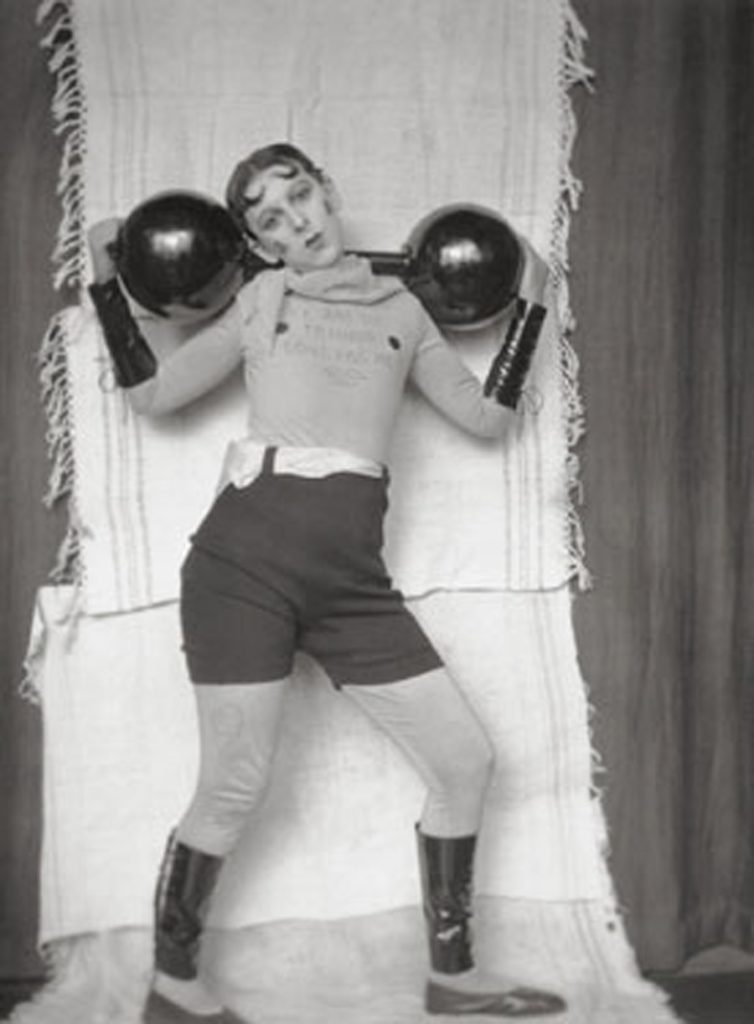
It has the curious capability of clarifying my perceptions and views on the world, and most of all on social relations. Maybe because of this, this seeming shift of understanding, the flickering image as the shutter opens and closes in inconstant velocity, it sets in train associations, one thing leading to another, half remembered things come back to me as they do in writing this. Actually, already with the title, because it is attached to this music, it has a powerful resonance in my memory, almost like an intoxication: the boxer as paradigm of a life, fighting, as resistance, and struggle, to the last round. It reminds me of my mother’s passionate enthusiasm for Muhammad Ali, surprising and touching in provincial Italy a lifetime ago, and of the romantic-complicated love of Edith Piaf for Marcel Cerdan I once read about, and of Claude Cahun, exploring and shaping an identity of her own to escape the straight jacket that suffocated her, trying on clothes and personas (maybe you know the pictures, her “Training Series” in the late ‘20’s) where she dressed up as a boxer, bold and provocative…and out on a limb. (But she deserves one of my next posts, she deserves more).
In these pictures, she wears a boxer’s costume but with very feminine make up and with a shirt on which she has drawn her nipples and the phrase “ I’m training, don’t kiss me”, surrounded by hearts. Her life fight to affirm her sexuality in fact, finds in the image of a boxer the perfect way to express her bivalent character: on one side a clear strength to be fully herself but also, on the other, the melancholy of an underlying certainty that the world around her would not, could not, fit her fluid sexuality.
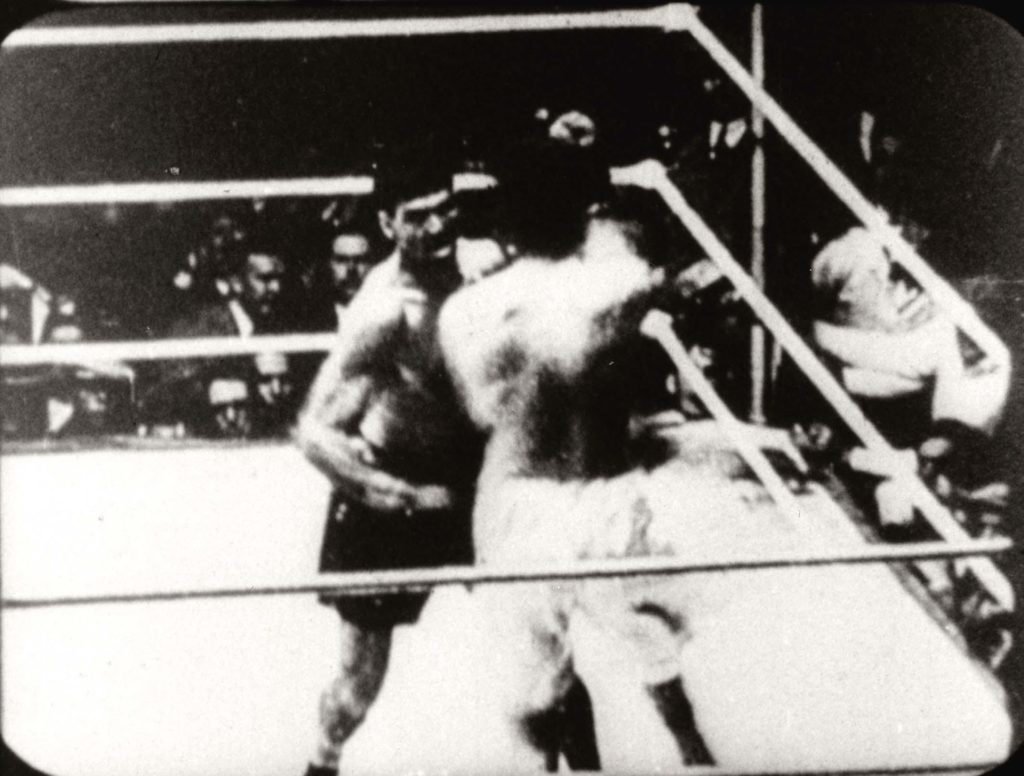
Then, from her a slip or shift in time and place to the mysterious loop of James Coleman’s “ Box (ahhareturnabout)” of 1977, without any question his most significant work, his one great work. A film of just a few minutes, a fragment of the grainy black and white celluloid record of the Tunney vs. Dempsey bout of 1927. The 50 years between the film being made and its recuperation by Coleman, is in itself a slip in time, and disquieting. Coleman may recontextualise the material of the film but it fails to be assimilated into the matter of the present, into the familiarity of the present and, the homogenizing process of the past, becoming the stuff of contemporary reading, stripped of its raw being.
It does something that art as appropriation never does. Instead of the fetishism of past meanings being the only remnant in a dull rehearsal of perceived substance, bled of all vigor, the film, treated and edited, remains other, strange, outside of both its time and ours. In a kind of between space of memory and association without the reconciliation of the familiar present or of history. The editing of the film converts the movements of the boxers as a visual description of the sound of the boxers and the audience. Emphasizing the rhythm and the repetition.
But here is the strange thing, even watched without the sound that structures it as art it remains distant and hallucinatory. And Coleman’s work is a work of channeling. The voices of the spectators following the match become part of the narration of what they are looking at: the viewers, we, and the boxers unified in the narrative of a match. The flickering images fluctuating in time and space. And this is what for me is its deeper connection with The Nationals album, it’s sense of between and it’s sense of collective narrative.
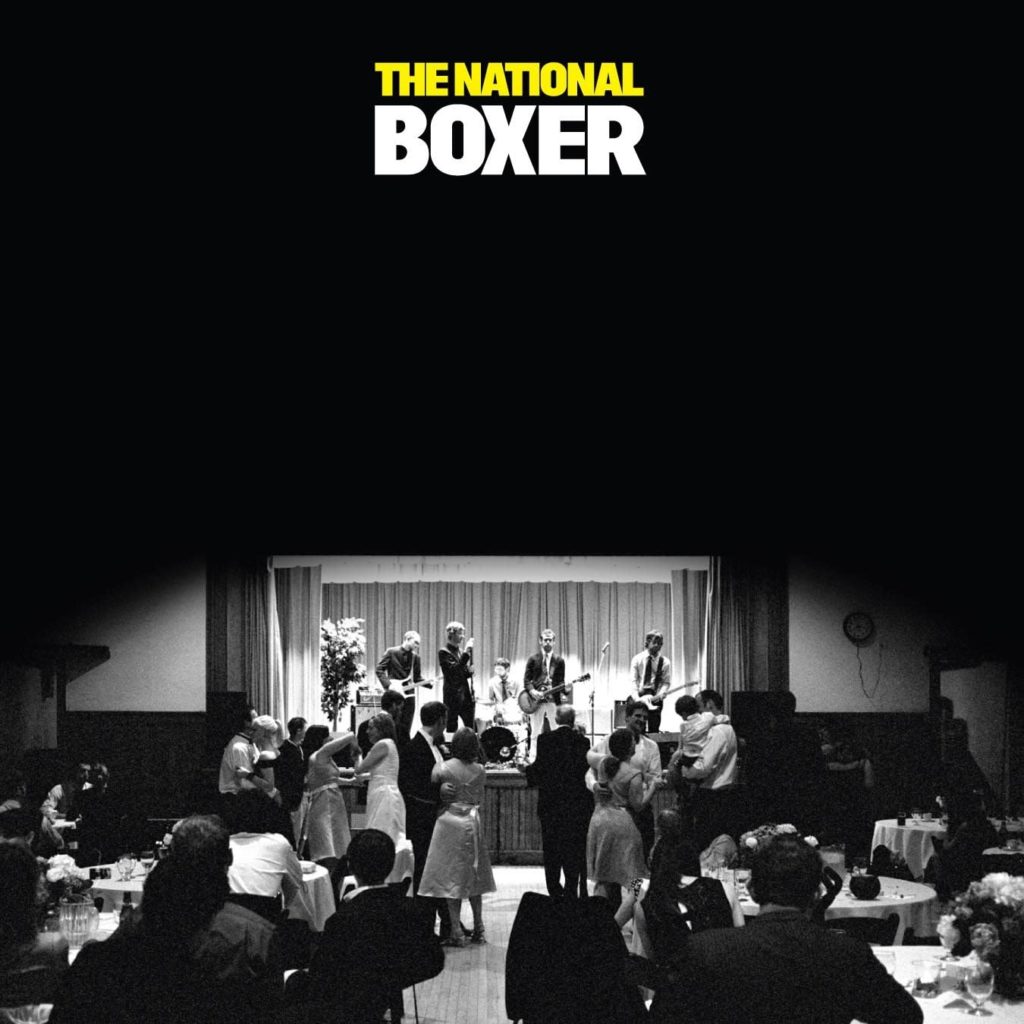
“Boxer” has in the song “Slow Show” a key, the metaphor of the punch and, as in Coleman’s film, a sense of unstable time, of slow experience, like the scene on the cover of the album. In fact, a black and white picture of the group playing at the wedding party of their producer, it looks as though staged or a shot from another time. At once familiar and unfamiliar, seemingly recognizable but unstable. A narrative that is underscored in the melody line and arrangement, and in the lyrics throughout the album. It connects intimacy, small scenes of the everyday, recognition and community, in an unstable history.
Although all the group were from Cincinnati they formed The National in New York between 1999 and 2000, at the beginning of the new millennium with its charge of hope for the future, but also, we know, just before the events of 9/11 which were dramatically to make everything precarious and uncertain. A dramatic time when fear changed our way to perceive the other, when we were asked to be alert and careful about crowded spaces, and the way we travel changed. (And it’s still like that, or again like that, the same foreboding, but of course now the numbers of the dead are greater and the sense of confusion is different).
It was with “Boxer”, their 4th album released in 2007, as they came to elaborate this dramatic time, that they moved to a more structured alchemy between lyrics and orchestration which were to make them famous: listening to the songs together, one after another, draws the listener into its double loop, between hopes and melancholy, the city and intimacy, between what could have been possible and what instead life appears to be in contemporary society.
It’s a unique journey made through a succession of scenes, moments and gestures, little polaroids of daily life, but they’re so vivid that there is in each lyric a personal, collective/private space, of participation.
The insistent rhythm of the drummer, together with the calculated repetition of the same phrase several times in a lyric, gives a beat to the narration that is not so distant from that of Coleman’s film, and it helps to create a sense of extended time, even within a single song.
And in writing this, I am surprised by what I am describing because the album has the most beautiful balance of orchestration, of arrangement and instrumentation, that they did not have before and would not come to again.
Nevertheless, if the metaphor of the boxing match is drawn out in ” Slow Show”, it’s in “Fake Empire” that there is most strongly the double axis of a troubled look at its time and a resonance with our own time. The song came to stand for the album, although it’s clear now that each song is an element in its narration, even before it was used by Barack Obama for his campaign in 2008, but most of all for its presence, for the look which it gives on the period in which it was written. In fact, this first track on the album opens to the first decade of the millennium, after the hope, and before the fall.
What had been so ardently wished for before the shock of 9/11 and then was carefully reconstructed with illusory solidity, mortgaged and leveraged a hundred times over, was set in an artificial landscape, a sort of fake construction of a distorted narrative of wellness, in which many felt as though disoriented. Able to read in every day a tale of a world on a path of prosperity, but at the same time, beset by an uncertainty of what was achieved, what personal goals could be enough if everybody was pushed to produce more and more, and more… and all the time economic and social inequalities were growing.
Then, and it was not so much later, what was for The National a story, maybe a disabused presentiment, with the melancholy romanticism of knowing disillusion, or an account of the malaise of their time, became reality. Just as the certainty of what would follow the invasion of Iraq could not stop it happening, the sense of a fake common wealth, of unease and of the coming chaos, could not stop the financial crash of 2008 in the USA, or stop its effecting the entire world.
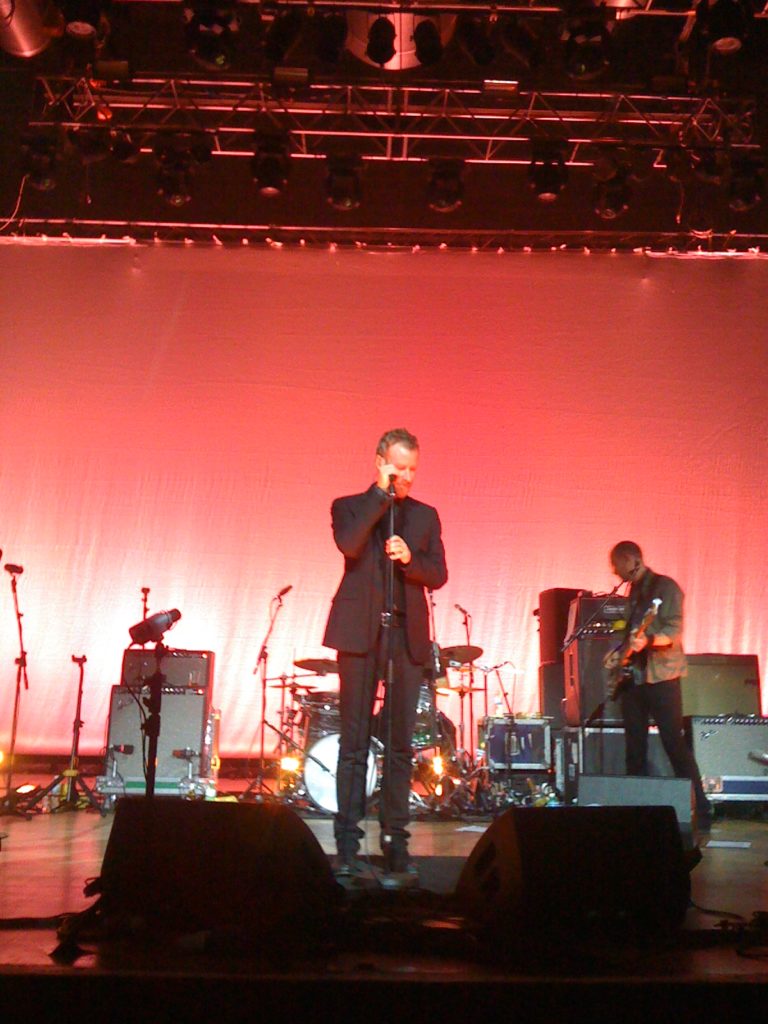
And these things really should have been a warning for our present.
And this sense of private worlds, of intimacy, and the public sphere being wholly porous to each other is for me so inspirational for the condition that we’re living right now. It creates not just a soundtrack to our days but a field in which to set our look on feelings, hopes and how we live the present.
In fact, coming back to it after not listening to it for a long time, I was reminded that what has always been touching for me in these songs is how the account of minor dramatic or simple moments of daily lives act as a frame to see closely the contemporary struggle between interior life and mass social structures. Their descriptions of small everyday moments and actions are able to represent urgencies and needs, which are part of familiar daily struggle. What affects me is that it moves in me thinking which doesn’t come from romantic perception ( I am not a romantic woman), what is expressed is of actions and what is missing, what is missed in society, and about sentiments that I care for in life like empathy and shared being….and about the single small step that we can take each day.
